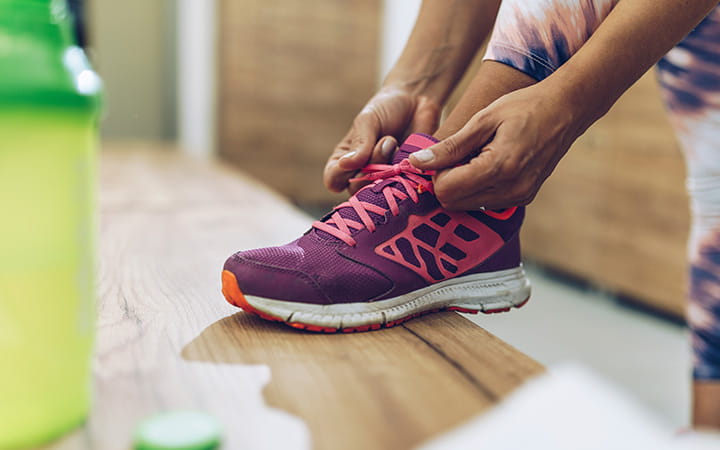How To Choose the Right Shoe For Running
March 24, 2021

Choosing the right running shoe is important to prevent injuries. Footwear that is properly fitted can provide protection from overuse injuries, help an athlete avoid blisters and allow a more enjoyable running experience.
We talked with Laura Goldberg, MD, a UH sports medicine specialist with a special interest in running/endurance medicine, for some tips to choosing the running shoe best suited for you.
Perform a 'Wet Test'
A wet test can help determine if you have high arches, flat feet or neutral arches. Here’s how to do it.
Place your feet in water and step onto a towel or paper bag. Notice the imprint left by your foot.
- If you see only toes and heels, this indicates that you have a high arch and you may be an underpronator.
- If the outline of the whole foot is visible, generally you are flat-footed and considered an overpronator.
- A curve in the middle of the foot with an outline of the toes and heels indicates a neutral foot.
Shop at the Right Store
It’s a good idea to shop at a specialty running shoe store. These types of stores have trained salespeople who can help identify the type of shoe best suited for your feet and running style.
Tell them what kind of arch you have, if you under- or overpronate, and identify any previous or current injuries you may have develop from running.
The staff might ask you to run on a treadmill to observe how your run or video-record you while you walk and run barefoot to see what your feet and ankles do mid-stance. The staff should also measure your foot, which can change in size over the years.
The staff at your specialty running shoe store will use all of this information to select three or four shoes that are appropriate for you to try on.
Bring Your Old Running Shoes To the Store
Take your latest running shoes shopping with you. They can provide additional clues to the store staff about your running form.
Older shoes that show wear on the treads and sides, such as overstretching, can indicate where you typically land and how your foot moves when your run.
Understand What Type of Shoe Can Work for You
There are running shoes for every body type and running style.
Usually, overpronators or those with a neutral arch benefit from a motion control shoe, which is designed to hold the foot firmly in place. These shoes generally have a stiff heel and a fairly straight shape, with added support under the arch. The area between the sole and the flexible upper – called the midsole -- is usually very firm.
Underpronators benefit from a stability shoe. These shoes offer some motion control but tend to have more support, cushioning and flexibility. They often include a firm area within the midsole to reinforce the arch or other support features.
Buy a Shoe With a Removable Arch Insert
This is helpful if you need to put orthotics in your shoes. If you already wear orthotics, bring them to the store to make sure they fit comfortably in your new shoes.
Other Running Shoe Tips
- The shoe should be flexible when you bend it from heel to toe.
- To increase the life of your shoe, do not use it for other activities.
- Consider buying two pairs of shoes and alternating them on each outing. If you are running frequently, this allows time for the shoe to dry out.
- Write the date that you purchased your shoes on the inside tongue.
- Track your miles on a calendar and total it weekly and monthly. Make sure to replace your shoes around 300 to 400 miles.
Related Links
Always wanted to run a 5K but didn’t know where to start? Are you a 20-year distance runner? Or are you a couch potato looking to start running? The UH Rehabilitation Services and Sports Medicine running program can help. The program is intended for runners at all levels, from novices to ultramarathoners. Learn more about how the UH Rehabilitation Services and Sports Medicine running program can help you achieve your best.
Tags: Exercise, Fitness, Laura Goldberg, MD


